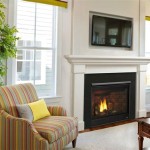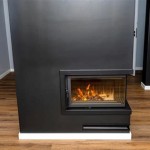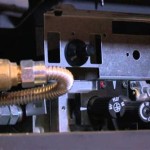Wood Burning Outdoor Fireplace Kits: A Comprehensive Guide
Wood burning outdoor fireplace kits offer a convenient and aesthetically pleasing solution for creating a focal point in outdoor living spaces. These kits provide a pre-designed and often pre-cut set of materials, simplifying the construction process compared to building a fireplace from scratch. This article delves into the various aspects of wood burning outdoor fireplace kits, including their benefits, selection criteria, installation considerations, and safety precautions.
The allure of an outdoor fireplace stems from its ability to extend the usability of patios, decks, and yards beyond the warmer months. The radiant heat provided by a wood-burning fireplace can create a comfortable environment even on cool evenings. Beyond functionality, an outdoor fireplace adds a visual element of warmth and sophistication, enhancing the ambiance of gatherings and providing a relaxing atmosphere for quiet contemplation.
Compared to traditional brick-and-mortar construction, wood burning outdoor fireplace kits offer several advantages. They typically require less technical skill, making them accessible to a wider range of homeowners. The pre-designed nature of the kits minimizes the potential for design errors and ensures structural integrity, provided the installation instructions are followed diligently. Furthermore, kits often result in significant cost savings due to reduced labor and material waste.
The market offers a diverse range of wood burning outdoor fireplace kits, varying in style, size, material, and features. Some kits are designed for simple assembly using interlocking blocks or panels, while others require more extensive mortar work. The selection process should consider factors such as the desired aesthetic, the available space, the intended use, and the potential for future expansion or customization.
Key Point 1: Benefits of Wood Burning Outdoor Fireplace Kits
Perhaps the most significant benefit of a wood burning outdoor fireplace kit is its relative ease of installation. Traditional masonry fireplaces require specialized skills and experience in bricklaying, stone setting, and chimney construction. Kits, on the other hand, are designed with user-friendliness in mind, often featuring pre-cut components and detailed step-by-step instructions. This allows homeowners with basic construction skills to undertake the project themselves, saving on labor costs and gaining a sense of accomplishment.
Cost-effectiveness is another compelling advantage. Building a fireplace from scratch involves purchasing individual materials such as bricks, mortar, firebrick, and chimney liners. These materials can be expensive, and waste is often inevitable. Fireplace kits, on the other hand, are priced to include all necessary components, and the pre-cut design minimizes material waste. This streamlined approach translates to significant cost savings compared to custom construction.
Design consistency is ensured with fireplace kits. The manufacturer has already worked out the structural engineering and aesthetic details, guaranteeing a cohesive and visually appealing final product. This eliminates the risk of design flaws or inconsistencies that can arise when attempting a custom build without adequate expertise. The homeowner can choose a kit that matches their desired style and be confident that the finished fireplace will meet their expectations.
Finally, many outdoor fireplace kits offer flexibility in terms of customization. While the basic structure is pre-defined, homeowners can often personalize the fireplace with decorative stones, veneers, or other finishing touches. This allows them to create a unique outdoor feature that reflects their individual taste and complements their existing landscaping.
Key Point 2: Selecting the Right Fireplace Kit
Choosing the appropriate wood burning outdoor fireplace kit requires careful consideration of several factors. The first is the available space. Measure the area where the fireplace will be located to ensure that the kit's dimensions are compatible. Consider not only the footprint of the fireplace itself but also the surrounding space needed for seating, walkways, and safety clearances.
The style of the fireplace should complement the existing architecture and landscaping. Kits are available in a variety of styles, ranging from rustic stone to modern concrete. Choose a kit that blends seamlessly with the overall aesthetic of the outdoor living space. Consider the color and texture of the materials, as well as the overall design of the fireplace.
Material selection is also critical. Common materials for outdoor fireplace kits include concrete blocks, natural stone, and manufactured stone veneers. Concrete blocks are generally the most affordable option, while natural stone offers a more traditional and rustic look. Manufactured stone veneers provide a balance of aesthetics and affordability. Consider the durability, maintenance requirements, and aesthetic appeal of each material when making your decision.
Consider the features offered by different kits. Some kits include built-in wood storage, while others have integrated grilling surfaces or cooking features. Think about how the fireplace will be used and choose a kit that offers the features that are most important to you. Pay attention to details such as the size of the firebox, the height of the chimney, and the presence of a spark arrestor.
Finally, research the manufacturer and read reviews from other customers. Choose a kit from a reputable manufacturer with a proven track record of quality and customer service. Read reviews to get an idea of the ease of installation, the durability of the materials, and the overall satisfaction of other users. This will help you make an informed decision and avoid potential problems down the road.
Key Point 3: Installation and Safety Considerations
Before beginning installation, familiarize yourself with local building codes and regulations regarding outdoor fireplaces. Some municipalities may require permits or have restrictions on the size, location, or emissions of outdoor fireplaces. Ensure that the chosen location complies with all applicable regulations to avoid potential fines or delays.
Follow the manufacturer's instructions meticulously. Fireplace kits are designed for specific assembly procedures, and deviating from the instructions can compromise the structural integrity and safety of the fireplace. Pay close attention to details such as mortar mixing ratios, block alignment, and chimney installation. If you are unsure about any aspect of the installation process, consult with a qualified contractor or mason.
Ensure a proper foundation is built. The fireplace should be built on a solid and level foundation, such as a concrete slab or a compacted gravel base. The foundation must be able to support the weight of the fireplace and prevent settling or shifting over time. Consult with a structural engineer or experienced contractor to determine the appropriate foundation for your particular soil conditions and fireplace design.
Use appropriate fire-resistant materials. The firebox and chimney liner must be constructed of fire-resistant materials such as firebrick or stainless steel. These materials are designed to withstand the high temperatures generated by wood-burning fires. Do not use ordinary bricks or concrete blocks in the firebox, as they can crack and crumble under extreme heat.
Maintain a safe distance from combustible materials. The fireplace should be located a safe distance from any combustible materials such as trees, shrubs, fences, or overhanging structures. Follow the manufacturer's recommendations for minimum clearances and consult with local fire safety officials for guidance. Clear the surrounding area of dry leaves, brush, and other flammable debris before lighting a fire.
Always use a spark arrestor. A spark arrestor is a mesh screen that is installed at the top of the chimney to prevent sparks and embers from escaping and potentially igniting nearby vegetation or structures. Check the spark arrestor regularly and clean it as needed to ensure proper airflow and prevent buildup of creosote.
Never leave a fire unattended. Keep a close eye on the fire at all times and never leave it unattended. Have a fire extinguisher, water hose, or bucket of sand nearby in case of emergency. Ensure that all embers are completely extinguished before leaving the area or going to bed.
Regularly inspect and maintain the fireplace. Inspect the fireplace regularly for cracks, loose stones, or other signs of damage. Repair any damage promptly to prevent further deterioration and ensure the safety of the fireplace. Clean the chimney regularly to remove creosote buildup, which can be a fire hazard. Schedule a professional chimney inspection at least once a year to identify any hidden problems and ensure that the fireplace is operating safely.
Consider the impact on neighbors. Be mindful of the smoke and noise generated by the fireplace, especially in densely populated areas. Avoid burning excessively smoky wood, such as pine or green wood. Consider the wind direction and avoid burning fires when the smoke is likely to blow towards neighboring properties. Communicate with your neighbors and address any concerns they may have.
By carefully considering these installation and safety factors, homeowners can enjoy the warmth and ambiance of a wood burning outdoor fireplace while minimizing the risk of accidents or property damage.

Outdoor Fireplace Kits Stonewood S Cape Cod Ma Nh Ct

Diy Outdoor Fireplace Kit Fremont Makes Hardscaping And Easy

Semplice Outdoor Fireplace Kit Rcp Block Brick

Diy Outdoor Fireplace Kit Fremont Makes Hardscaping And Easy

Grand Fireplace Kit Parr Lumber

Outdoor Fireplace Kits Masonry Stone

Stone Age Manufacturing 18 Inch Veranda Diy Outdoor Fireplace Kit

Pavestone 40 In X 36 60 Outdoor Fireplace Insert Kit 417 Rjt Fpi The Home Depot

Outdoor Fireplaces Diy Kits Plans Cape Cod Ma Ri

Outdoor Fireplace Kits Southwest Stone Supply
Related Posts








